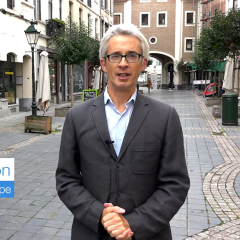BusinessEurope Economic Outlook Autumn 2020 - Protecting Europe's fragile recovery
Following the deepest falls in output since the Great Depression in this spring, the EU economy began its recovery during the summer, but the path back to pre-COVID levels of output is likely to be long and uneven, with uncertainty unusually high.
We expect the EU economy to fall by 7.3% in 2020 as a result of the COVID-19 epidemic and associated lockdowns, followed by growth of 5.0% in 2021. The situation has deteriorated in recent weeks with a second wave of lockdowns and faster spread of the COVID-19 virus than expected. This poses a downside risk to the forecast.
Underlining the challenges ahead, we forecast that even by Q4 2021, the level of economic activity will be around 3% below the pre-crisis level. The economic impact is divergent across both sectors and geographically. Some EU member states face double-digit GDP drops this year, as opposed to a fall of around 3%-4% in other member states. And whilst official data show only marginal increases in unemployment, falls in hours worked are equivalent to 18 million full time jobs in the third quarter of 2020.
In order to ensure a stronger recovery and address the economic crisis that is now materialising, BusinessEurope recommends that
- Given the resurgence of the virus, policy-makers must avoid any premature unwinding of measures to support business and workers, such as wage subsidies and tax holidays, which would risk a new recession and greater long-term economic scarring.
- Policy-makers must support overall investment levels in the face of the massive fall in private investment. In particular, rapid agreement and implementation of the EU’s Next Generation EU recovery instrument is essential. The funds must support investment and reforms that can help transform EU growth, productivity and competitiveness.
Central economic forecasts, EU27

Watch a video of our Director for Economics James Watson talking more about the situation.
